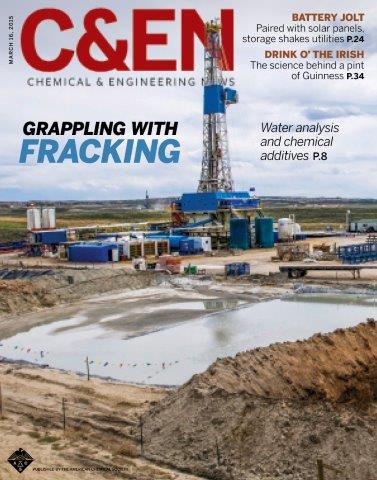FOR IMMEDIATE RELEASE
ACS News Service Weekly PressPac: March 18, 2015
Finding out what’s in ‘fracking’ wastewater
"Figuring Out Fracking Wastewater"
Chemical & Engineering News
In early January, almost 3 million gallons of wastewater from a hydraulic fracturing (“fracking”) operation in North Dakota spilled into nearby creeks. The accident highlighted ongoing concerns about what’s in fracking fluids and wastewater, and whether they pose a threat to human health or the environment. An article in Chemical & Engineering News (C&EN), the weekly newsmagazine of the American Chemical Society, details what scientists are doing to answer these questions.
Celia Henry Arnaud, a senior editor at C&EN, notes that figuring out what potential harm fracking wastewater might cause is a major challenge. Oil and gas companies that practice the extraction method closely guard the recipes for the fluids they use. To complicate matters, the so-called “produced” water that flows back up from gas wells brings with it natural substances from below ground. Some of these substances, if spilled, could potentially harm the environment. And the composition of these additional compounds depends on the geology of the drill site.
Scientists are using the latest analytical techniques to get a better picture of what’s in fracking wastewater, how they might break down in the environment and whether there are by-products of concern. Knowing the answers to these questions will help inform efforts to dispose and treat the water — and deal with accidental leaks.
Related article: “Disclosure Debate”


